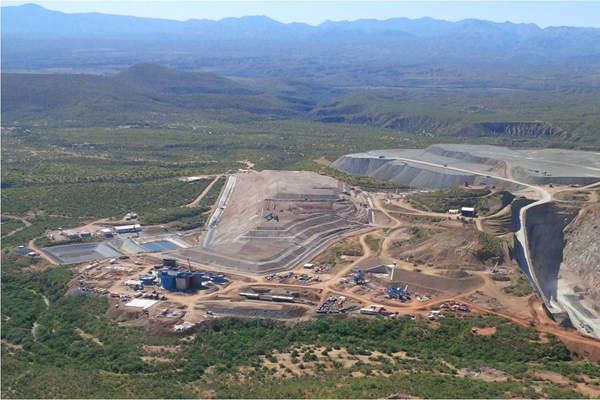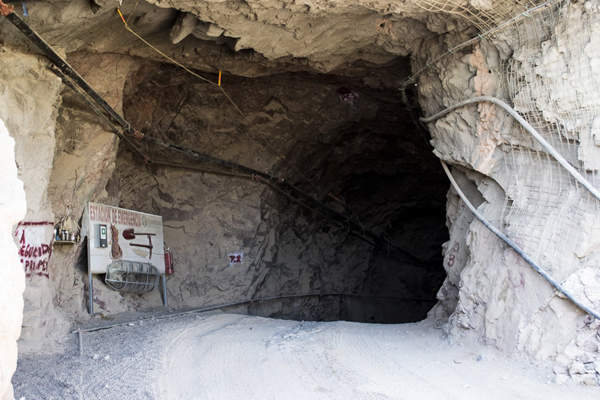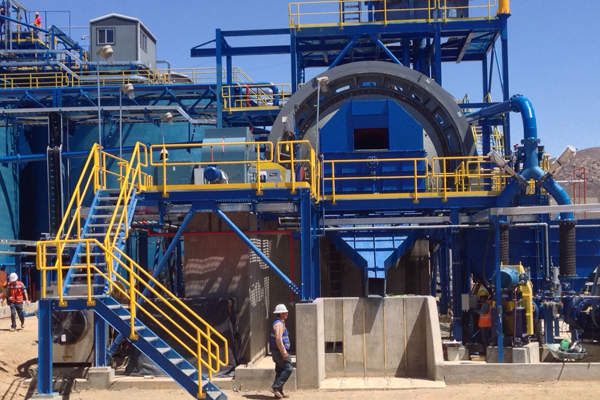
Santa Elena is an epithermal silver and gold deposit located 150km north-east of Hermosillo, near Banamichi in Sonora, México, the country that hosts three of the ten biggest silver mines in the world.
The mine is fully owned by Canadian precious metals producer SilverCrest Mines.
First silver and gold doré bar from the Santa Elena mine was produced in September 2010. The mine transitioned from open-pit to an underground operation in September 2014, with the aim of increasing its throughput capacity from 2,500 tonnes per day (tpd) to 3,000tpd.
Santa Elena mine produced 2.66 million ounces (Moz) of silver equivalent in 2013, compared to 2.37Moz in 2012. Following its expansion, it is forecasted to produce up to 3.6Moz of silver equivalent in 2014.
Santa Elena mine development
The underground mine is 100% owned by Canadian mining company First Majestic Silver Corporation (FMS) and covers an area of 393ha.
The first phase development of the Mexican gold-silver mine, which started commercial operation in 2011, involved gold and silver production using a 2,500tpd open-pit heap leach facility.
Second phase involved the transition from an open-pit heap leach operation to an underground conventional milling operation using counter current decantation (CCD) Merrill Crowe processing method. The transition is expected to extend the mine life by eight years.
Santa Elena silver-gold mine geology and reserves
The silver-gold mine is located in the Basin and Range geologic province within the Sonora Desert region, which is located near the Proterozoic rifted continental margin of the North American plate. It contains a sequence of shallow marine shelf carbonate and siliciclastic rocks.
Santa Elena is a high-calcium, low-sulfidation deposit with features identical to those of other high level low-sulphidation deposits found in Mexico, Chile, Nevada and Arizona in US. The mine region comprises of early Tertiary andesite and rhyolite flow type primary rocks exhibiting propylitic to silicic alteration.
The main mineralised zone consists of a 1.2km long cross-cutting structure trending in the east-west direction. Deposit is filled with andesite and granodiorite dikes with the main structure comprising of quartz veining, quartz veinlets and stockwork, banded quartz, vuggy quartz and black calcite. In addition to gold and silver, the deposit also contains lead, zinc and copper in smaller quantities.
As of April 2013, the Santa Elena mine including open-pit, underground, and leach pad was estimated to contain 327,430oz of probable gold reserves and 19.7Moz of probable silver reserves. The underground mine was estimated to hold 198,170oz of gold and 13.6Moz of silver as probable reserves.
Mining and processing of ore at Santa Elena mine
The Santa Elena open-pit was mined using the conventional drill and blast mining method. The mining fleet included Caterpillar’s 740 articulating trucks, 769 haul trucks, D8 and D9 dozers, air track drills, 140H grader, and other maintenance vehicles.
Long hole stoping and mechanised cut and fill methods (for shallow dipping areas) are employed for underground mining operations. Access to the mine is provided through a 4m wide decline from the surface.
The run of mine ore is hauled onto load haul dump (LHD) units and transported to the surface by trucks and stockpiled. Underground mining equipment includes two-boom diesel/electric jumbo, long hole stoping (LHS) production drills, load-haul-dump units (LHDs), an integrated tool carrier, and trucks.
Ore is crushed in a primary jaw crusher before putting it to secondary and tertiary crushing. The crushed material is conveyed via feeders to a single-stage grinding circuit comprised of a ball mill. Grinded material is then leached in a leach circuit using cyanide.
Pregnant solution is separated from the leach residue in a five-stage counter current decantation (CCD) circuit. The pregnant solution CCD thickener passes through Merrill-Crowe deaeration tower where dissolved oxygen is removed from the solution. Following deaeration, the solution undergoes filtration and zinc cementation processes, after which the silver-gold precipitate is acid washed and dried, and then smelted.
Infrastructure facilities at Santa Elena mine
The mine is accessed by a 7km long main road from the paved highway. Power supply for the mine is provided by an electrical power line, located near the mine site, as well as by diesel generators.
Water supply for the mine is provided from the groundwater from local sources.
Contractors involved with Santa Elena mine development
Maquinaria y Construcciones Nuñez Fontes was the third party mining contractor for Santa Elena open-pit mine. Vector Engineering provided detailed engineering for the heap leach pad for the Santa Elena open-pit mine.
Excel Machinery, a company based in Texas, supplied the three-stage crusher for the mine.










